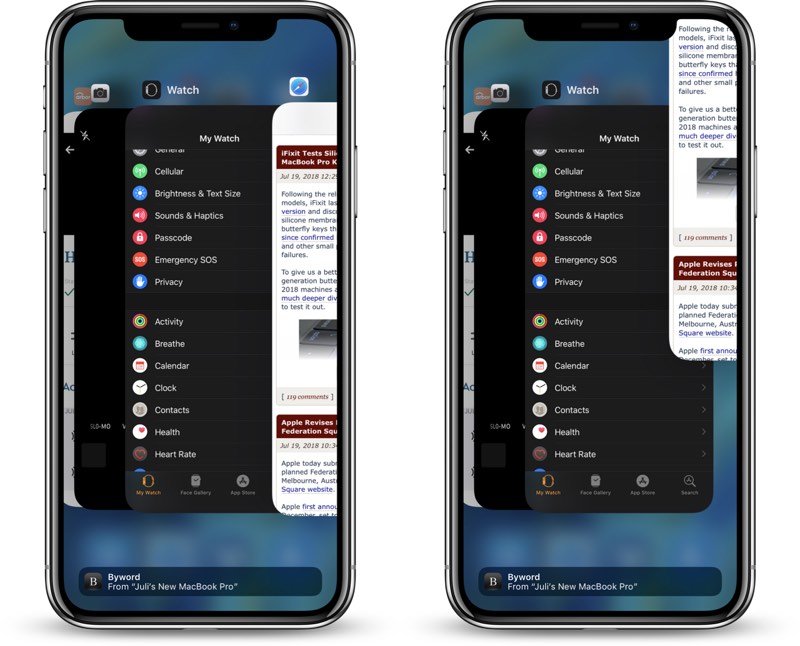Below are the manual steps you should follow to completely uninstall applications in Mac. Step 1: Click the Finder icon in your dock to open a Finder window. Step 2: A sidebar will open. Click ‘Applications’ in the sidebar. Step 3: Drag the app you need to delete from the Applications folder into the trash.
For Macbook Pro Type C accessories : First Take Advantage of 50% Off discount on Indiegogo here!

How To Close Apps
See the step by step guide to uninstall Apps on Mac. Must See: How to clear the cache on Mac and delete cache files from MacBook; Mac running slow: Easy fix to this frustrating problem; Manually Uninstall Applications on Mac. Whatever the OS version you are using, the uninstallation of your apps on Mac remains the same. If an app on your Mac stops responding and you can't quit the app normally, use Force Quit to close the app. To quit (close) a Mac app normally, choose Quit from the app's menu in the menu bar, or press Command (⌘)-Q. Why force quit might not work in the first place. A lot of the time, this can happen when an app isn’t well built. When this happens, all kinds of havoc can be wreaked on your hardware that makes it tough for your Mac to process the tools necessary to force quit an app. Memory leaks can be a big source of these kinds of issues. I need completely close my application when a user closes the document window using the applications at runtime. Currently when they click the window, the application stays open and is displaying its menu bar. If this is a mac app it should go in your IBAction that is linked to the quit button. If you want the application to terminate when. By closing an app the way you would on a 3G phone (clicking the home button), you will no longer fully quit an app. This is similar to the way things work on a Mac OS - clicking the 'X' won't actually quit a program on a Mac until you actually go to 'Quit' in the drop-down menu. To close an application, the best way to do it is by pressing Command and Q keys. By doing this, you can be sure that all apps will be closed, because some apps are not closed when you press the red button at the top left corner.
Usually, open a app you will open a window on your MacBook. Some programs even let you open new windows on the fly; the following illustrates a window in its purest form: a new Finder window. To display this window on your own MacBook, choose File→New Finder Window or press Command+N. From here, you can reach any file on your MacBook or even venture to the Internet.
When you’re finished with a document or you no longer need a window open, you can close it to free that space on your Desktop. To close a window in Mac OS X, move your pointer over the Close button; it’s the red circular button at the top-left corner of the window. An X appears on the button when you’re in the zone. When the X appears, just tap the trackpad.
How To Fully Close Apps On Mac Os
Sometimes we need to do something else in a hurry. We want to close all of the apps for a few seconds. If your computer have been used many years, you may encounter the app can not be closed very smoothly! So there are some ways to force closing your computer.

OS X has his own special window to handling apps that need to be force quit. You can access this window two ways, first, by clicking the Apple logo in the Menu Bar and selecting Force Quit. Or, you can bring up this same window by using the keyboard shortcut Command-Option-Escape. The window will display all running applications, and identify with red text any apps that are “not responding.” Just highlight an app and click the Force Quit button to quit it. As mentioned above, there’s no warning when you force quit an app, so be careful as you make your selection.
There is another way, you can directly force quit apps via a keyboard shortcut, without any other steps. This may be the best and most obvious method. But using the keyboard shortcut below will immediately force quit the active, or foremost, application. The problem is that it’s very easy to lose track of which app is active, especially when dealing one or more frozen or unresponsive apps. Therefore, this method is the most risky from a data loss perspective, as it’s far more likely that a user will make a mistake and inadvertently force quit the wrong app.
How To Close An App On Mac
But, as long as you understand this risk and are careful, this force quit shortcut is the fastest method. To use it, make sure the frozen app is active and press and hold Command-Option-Shift-Escape (you’ll notice that this is simply the Force Quit Window shortcut with the Shift key modifier thrown in). As with other force quit methods, the active application will immediately be force quit.
Sometimes hardware issues or major OS X bugs cause so much instability that the only way to get your Mac up and running again is to reboot. Absent those relatively rare circumstances, however, you should be easily able to control any frozen or misbehaving apps by force quitting them via one of the methods above. Just be sure to save your work when possible, and double-check your steps to avoid quitting the wrong app.
All of us know, Forcing closes apps which is bad for our Macbook. If we have enough time to close our computer. Please close it one by one!